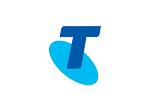Service objectives
The following list represents the Key Service Objectives (KSO) for the Appleton Greene Leadership Execution service.

Leadership Discovery
The Leadership Execution program starts with discovery. Here in this step, the leader will take a three-minute, statistically reliable online survey that will measure how the leader’s personality is presently impacting performance. Once that is done the leader is introduced to the Intentional Difference process. Through this process the leader will learn how their personality, even traits they have considered to be weaknesses, may be used to increase leader effectiveness. Next, focus groups will be conducted with the leader’s direct reports, peers, supervisor, and supervisor’s peers. This data will provide the rationale for how the activities and strategies which follow are customized to the individual leader. During this part of the program we will be: Identifying and articulating the unique combination of the six dimensions of a person’s; Intentional Difference (ID); Using a person’s ID to position the individual in a role where more of his/her 5% may be increasingly utilized and applied; Identifying the critical outcome of a specific role for increased job performance; Identifying the achievement emotions of a specific role for increased job performance; Identifying the critical activities of a specific role for increased job performance; Assessing the match between each candidate’s unique differences and the critical activities of specific roles; Assessing the match between each candidate’s unique difference and the unique difference of the supervisor and peers for that specific role; Assessing the match between each candidate’s unique difference and the structure, strategy and culture of the organization and Developing metrics for tracking improved performance, to be assessed and reviewed periodically.

Leadership Milestones
The next step focuses upon milestone-setting. This is an important event in the development process. First it provides a way to identify what the present state of achievement is or has been. For this, the leader will provide the key performance indicators by which performance is measured within the organization. Next, the leader will provide the projections, goals, objectives or success factors they are charged with accomplishing within the present period of performance. Also, the leader will provide the expectations, goals, objectives he/she has of their team for the same period of performance. Finally, during this stage, the leader along with the coach will identify and begin to track the critical outcomes and critical activities required to ensure success by: Conducting a Gap analysis of the organization’s culture and direction; Setting or affirming personal goals for their work groups over the next 6, 12, 18 months; Conducting a conversation audit to assess leader’s impact upon employee likelihood to perform; Assessing how aligned present critical activities are with the critical outcomes expected of their team and Measuring the level of employee engagement in the leader’s workgroup.
Leader Development
At this point, notice the change in language from leadership to leader. In talking about leadership we focused mainly upon the activities that a person may do; going forward as we talk about the leader, our focus will be upon the leader and her/his personality and how that may be used to change and enhance how and what it is they do. Leader development is pervasive throughout this program in that it starts from the moment our engagement begins and only ends when our work is complete. The Leadership Execution philosophy is a unique approach to the relationship between the individual and the organization. It assumes a strength-based method that assesses individuals according to their unique mix of six dimensions, culminating in discovering and leveraging their Intentional Difference. Successful people put to positive and productive use that which is different about them. They are effective when they are “Intentional” with their “Difference.” Generally, people have the innate ability to solve their most difficult challenges. The Leadership Execution program poses key questions that facilitate leaders finding optimal solutions for the organization. Organizations often already have the people needed to get things done, however, the quality of outcomes is up to how well the leader and team are able to unleash others to do their best work. Leadership Execution will enable leaders in an organization to uncover the often overlooked and complex dynamics that hinder individual and team performance. Coaching and team facilitation are proven as an effective means of translating vision into innovative results. Leadership Execution also utilizes concepts Kevin Ford and I set out in our book, The Leadership Triangle. We discovered that there are three options a leader must choose from (tactical, strategic and transformational) which are essential to successful performance at all levels of an organization. A skilful leader chooses the right option, which results in exponential success. The art of being an effective leader is in knowing what sort of problem you are facing and what leadership option is required to tackle it. Overall the Leader execution program has little to do with how much expertise one has and more to do with how much critical knowledge of Self one applies. Productivity, effectiveness and team success is a human dynamic, the more self-aware a leader is the more successful they are in leading others. Executives should not focus on organizing their people but on aligning them, aligning them so that each person is more able to put their personality to purposeful and productive use. My coaching approach has proven effective in all fields, public, private and non-profit, nationally and internationally, focusing on the human dynamics a leader will encounter and teaching them to leverage their own unique intentional difference.

Leader Impact
Do you have influence? In your relationships, are you aware of how influence is at work? How do you exert influence? How do others influence you? These are very important questions for the leader, for they are about presence—your presence in a relationship. Our presence matters to those with whom we are in relationship. They care that we are around. More than that, according to how healthy an impact we have as leaders, they want us in their life and career—they want our participation, our influence. Influence is the subtle and tactful tool of the leader. It provides the leader with passive authority and undeserved empathy. Employees will follow the leader who has positively influenced them. They will identify willingly with them in failure and success. In this step by focusing upon leader impact, the leader is taught how to increase influence. Research establishes that as individuals become aware of, and gain more understanding about how to apply their unique difference, their influence upon others becomes more positive and collaborative. Their productivity and that of their team increases. We measure leader impact in two ways: Qualitatively, through the observation (job-shadowing) of the leader in meetings and workplace interaction with direct reports, and focus groups with a variety of constituents of the leader; Quantitatively through a statistically sound instrument that measures Leadership Effectiveness, Employee Engagement and Organizational Climate amongst those that are within the consistent workgroup of the individual. There is historical correlation between improvement in the qualitative observations and the quantitative measurement. Hence, both assessments are necessary to monitor progress and to identify areas of celebration and/or further development. There are milestone behaviours that can be observed as knowledge of a leader’s Leadership Execution increases. In observing leader impact, any daily or regularly recurring event may be selected as a targeted opportunity. Below are sample targeted opportunities with milestone behaviours: Targeted Opportunity: Interaction with Direct Reports; Critical activity: Improved communication effectiveness; Client will use the Intentional Conversation model to make fewer statements, ask more clarifying questions, listen 90% of the time during every conversation and limit her responses to two sentences or less; Targeted Opportunity: Interaction with Co-leaders; Critical Activity: Improved collegiality and partnership; Client will use the Intentional Relationship model to identify an area of practice/expertise for growth wherein she is a novice not a master, it should be an activity pertinent to getting work done, the mastery of which is beneficial to both her and another leader. Identify such a co-leader and present herself as a willing student, will solicit, from others with whom there is a warm or neutral relationship, a stronger partnership, with a request similar to: will you be willing to help me find new and positive ways of being a better partner to you and my other co-leaders and consult with trusted advisor(s) on a case by case basis at least once a week on challenges, learning and successes of each of the above.

Leader Execution
Leader Execution (LX) the next step, is one of the indispensable metrics of a successful organization. It is also a non-negotiable characteristic of the high performing executive. LX is not just about getting things done, but about getting important and exceptional things done, with and through others that marks the true leader. An effective leader development program will help leaders get more done. Leadership Execution, provides the leader with tools, strategies and insight which results a measurable increase in performance of a leader. Although execution, as Leadership Execution teaches, is an essential quality of the leader, teaching the leader how to unleash and empower others is equally important. To be truly successful executives must know how to create a compelling environment where employees each day become more engaged. To do this, leaders must be intentional in how they lead. At this point, using the data collected through the discovery, milestone-setting and leader impact activities, the leader along with the coach, will design a mind-map for leader execution which will include: Using the leader’s Intentional Difference to unleash and optimize the unique characteristics of individual team members; What are the metrics that matter and how to use them more effectively to increase performance; Map the four quadrants of employee performance within the leader’s workgroup; The existing process and practice of engaging employees; Creating an environment of accountability and excellence; Through leadership, leader and personality assessments, research based strategies, psychometrically sound tools and more than 25 years of use, Leadership Execution has proven effective in developing high-performing environment of accountability and excellence.
This service is primarily available to the following industry sectors:

Healthcare
Healthcare is far too complex for a traditional leadership model. With frequent wide-spread disasters, global shortage of doctors, nurses, midwives and other health providers, the healthcare industry needs are compelling. The World Health Organization estimates there is a 7.2 million shortage of health providers worldwide. WHO further reports that in developing countries 40% of nurses will leave health employment in the next decade. In this report they also estimate that around 90% of all maternal deaths and 80% of all still births occur in 58 countries, largely because those countries lack trained midwives. In the US every year there are an estimated 100 thousand preventable deaths in hospitals. These statistics can create anxiety for the patient, provider and healthcare executive. For the patient it may be the concern about the qualifications of the available staff on duty when they need care. For the healthcare provider it may be the stress of excessive work hours due to a shortage of fellow doctors, nurses, midwives and other professionals. For the healthcare executive the anxiety may be connected to the latest organizational metrics such as the percentage of Patients Leaving Prior to Medical Screening from the emergency room, to physician engagement scores, to patient satisfaction (HCAHPS) scores, to nurse turnover rate, to the utilization rate in the operating room, to JCHAO accreditation scores or new legislation that directly impacts funding. Clearly the chaotic world of healthcare requires a certain kind of leader; a leader who in the midst of daily pandemonium is calm enough to recruit, train, motivate, retain and reward personnel. In other words, a leader who is able to execute, amidst the maelstrom from a non-anxious, relational, innovative place. This is the type of leader the Leadership Execution program develops.

Technology
More than one third of workers in America today are between the ages of 18-34. That means 53.5 million workers in the US are from the Millennial generation. Compare that to 52.7 million workers who are in the 35-50 year old age group. And add to that the 45 million 51-70 year old age group and we have a picture of the multi-generational workplace that exists today. Technology amongst all others, is likely the one industry sector where there is a dominant percentage of workers from the millennial generation. And with that comes the challenge of managing, retaining and developing employees. To execute well in the technology arena, a leader must be able to create a strategy that excites and incites the workforce to create and maintain a competitive advantage. They must also be able to establish a structure that allows, even at times, breeds creative chaos in order to create and maintain an innovative environment. The effective leader, will allow people to create the process they need to do their best work, rather than enforce a “one-size fits all” set of processes. Knowing how to give people enough space and permission to fail, and individualized reward when they succeed is another unique way the ‘people-smart’ leader succeeds in the multi-generational technology organization. Ultimately the leader who will execute well in a technology organization will know that rewarding people both as a team and individually leads to higher productivity, collaboration and invention. Without leaders who can execute effectively in a multi-generational workplace across these five areas of strategy, structure, process, people and reward, the technology organization will soon find themselves unable to retain highly skilled and expensive people, lacking competitive advantage and losing market share.

Education
Gone are the days, and thankfully so, when the best teacher was promoted to be the next principal. Also, gone are the days when teaching was about rote memorization and regurgitation. Education is now more about learning styles, personality traits, emotional intelligence and special needs. We are in a new age of teaching and learning. We have smart boards, virtual learning groups, project based learning and individual educational plans. What has not changed is the need for effective leaders. The effective leader in education must be somewhat of a ‘psychologist-manager’. They must understand self and others at a level that equips them to motivate the novice teacher; creatively correct the veteran teacher; demonstrate understanding and concern of parents and unions, while preserving a standard of excellence in education. In other words, the effective leader in education must know how to not only navigate, but how to optimize conflict; how to set and share a vision; how to build constituency; how to create and maintain an engaged workforce; how to select personnel that fit the culture; and how to effectively partner with others to create a safe environment where diverse peoples with various personalities and other differences may teach, learn and grow together. Without leaders who understand how people learn best, how people work best together on a team and how they themselves lead best, the education industry will fall far short of creating engaged critical thinking students.

Construction
By 2025 the globalization of construction norms and requirements, plus other factors, will lead to a doubling of construction markets. The construction industry will increase by 70% to $15 trillion worldwide. By 2050, the demand for more housing will be a major construction challenge. At the present rate, the industry will struggle to keep abreast with the demand for better housing quicker. There is a recognized need for innovative solutions. One solution will be to identify, select and develop leaders who can execute. In my experience, leaders who succeed in the high-competency, cost-sensitive and deadline-driven world of construction, must understand which of three problem-solving options (tactical, strategic or transformational) to apply. They must know when the problem is tactical and who on the team is best equipped to solve it. They must know when a problem is strategic and be able to assess and mitigate any negative impact of external forces upon a project. They must know for example, when during a progress meeting the problem moves from being tactical such as laying down asphalt, to strategic, such as having to meet face to face with a resistant county clerk about a permit stuck in bureaucratic limbo. And the effective leader must be able to take on the transformational problem of shifting the culture of the organization based upon the emerging demands of the market. The construction industry is in dire need of such leaders. This is partly due to many of the existing leaders were excellent technicians who have been promoted to leadership roles. They were great at their previous jobs but are ill-equipped by nature or by training for their elevated roles.

Telecommunications
Telecommunications is at an inflection point. On the Sigmoid Curve also known as the S curve, the telecommunications industry has gone through the Inception and Growth stages, and is tottering dangerously between the Maturity and Decline stages. It is at this decision point that industries determine what they want to or need to become. This is that moment when the industry needs disruptive leaders. People who by nature are trailblazers. People who are Thinkers and Doers and people who are Influencers and Relators. Additionally, the industry is in dire need of leaders with technical expertise who can lead organizations to success. Often telecommunications industry leaders lament the fact that their best engineers and technical experts are ill prepared for the leadership roles they need to fill in order to keep the company moving forward. Effective leaders at this stage on the S curve, look for other leaders to lead. And at this stage in this highly competitive and very visible business sector the competitive edge resides within leaders who are effective in unleashing the leadership capacity in others. These leaders of leaders ensure the next generation of engineers and technical experts are put in the right roles, focused on the right tasks, surrounded by the right staff and given the freedom to fail. All organizations are a combination of chaos and structure, at this stage, the telecommunications industry needs to develop leaders who have an appetite and capacity to endure, if not promote the chaos of innovation and lessen the restraints of structure.
Bronze Service

Monthly cost: USD $1,500.00
Time limit: 5 hours per month
Contract period: 12 months
Bronze service includes:
01. Email support
02. Telephone support
03. Questions & answers
04. Professional advice
05. Communication management

SERVICE DESCRIPTION
The Bronze Client Service (BCS) for Leadership Execution provides clients with an entry level option and enables client contacts to become personally acquainted with Mr. Tucker over a sustainable period of time. We suggest that clients allocate up to a maximum of 5 Key Employees for this service. Your Key Employees can then contact the consultant via email, whenever they feel that they need specific advice or support in relation to the consultant’s specialist subject. The consultant will also be proactive about opening and maintaining communications with your Key Employees. Your Key Employees can list and number any questions that they would like to ask and they will then receive specific answers to each and every query that they may have. Your Key Employees can then retain these communications on file for future reference. General support inquiries will usually receive replies within 48 hours, but please allow a period of up to 10 business days during busy periods. The Bronze Client Service (BCS) enables your Key Employees to get to know their designated Appleton Greene consultant and to benefit from the consultant’s specialist skills, knowledge and experience.
Silver Service

Monthly cost: USD $3,000.00
Time limit: 10 hours per month
Contract period: 12 months
Bronze service plus
01. Research analysis
02. Management analysis
03. Performance analysis
04. Business process analysis
05. Training analysis

SERVICE DESCRIPTION
The Silver Client Service (SCS) for Leadership Execution provides more time for research and development. If you require Mr. Tucker to undertake research on your behalf, or on behalf of your Key Employees, then this would understandably require more time and the Silver Client Service (SCS) accommodates this. For example, you may want your consultant to undertake some research into your management, performance, business, or training processes, with a view towards providing an independent analysis and recommendations for improvement. If any research and development, or business analysis is required, then the Silver Client Service (SCS) is for you.
Gold Service

Monthly cost: USD $4,500.00
Time limit: 15 hours per month
Contract period: 12 months
Bronze/Silver service plus
01. Management interviews
02. Evaluation and assessment
03. Performance improvement
04. Business process improvement
05. Management training

SERVICE DESCRIPTION
The Gold Client Service (GCS) for Leadership Execution is intended for more detailed evaluation and assessment, that may require your Key Employees to have monthly meetings or interviews with Mr. Tucker. These meetings and interviews can be conducted over the telephone, Skype, or by video conference if required. The consultant can also attend your business premises, an Appleton Greene office, or another mutually beneficial location, but please note that clients are responsible for the costs of any disbursements separately, including travel and accommodation. This service enables you to integrate the specific skills, knowledge and experience of your designated consultant into your Key Employee management team. The Gold Client Service (GCS) can also incorporate training workshops, business presentations and external meetings with customers, suppliers, associations, or any other business-related stakeholders.
Platinum Service

Monthly cost: USD $6,000.00
Time limit: 20 hours per month
Contract period: 12 months
Bronze/Silver/Gold service plus
01. Project planning
02. Project development
03. Project implementation
04. Project management
05. Project review

SERVICE DESCRIPTION
The Platinum Client Service (PCS) for Leadership Execution is our flagship service and will be required if you need Mr. Tucker to facilitate the planning, development, implementation, management, or review of a particular project relating to his specialist subject, which would obviously require more time and dedication. This service enables you to reserve up to 12.5% of the consultant’s working month and provides a more hands-on service as and when required. If you need more time than this, then this can always be arranged, subject of course to the consultant’s ongoing availability. The benefit of having an external consultant involved in projects is they provide an independent perspective and are not influenced by internal politics, day-to-day responsibilities, or personal career interest. They provide objectivity, specific knowledge, skills and experience and will be entirely focused upon the tasks at hand. The Platinum Client Service (PCS) will provide your organization with a valuable resource as and when you need it.
Benefits
Human Resources
- Leadership effectiveness
- Organizational efficiency
- Higher retention
- Lower costs
- Higher productivity
- Competitive advantage
- Workforce loyalty
- Innovative solutions
- Employee engagement
- Manager effectiveness
Management
- Success culture
- Innovative solutions
- Organizational efficiency
- Decision making
- Goal attainment
- Global growth
- Workforce loyalty
- Leadership tools
- Trusted advisor
- Manage change
Customer Service
- Customer relations
- Customer engagement
- Strategy development
- Market growth
- Competitive advantage
- Employee experience
- Customer experience
- Market expansion
- Trusted advisor
- Customer-centric
Clients
This service’s current clients or employers include:

Federal Aviation Administration
The Federal Aviation Administration (FAA) is the organization responsible for managing our nation’s busy skies. With more than a million domestic passengers and countless tons of cargo in the air every day, our mission is a far-reaching and critical one. Our nationwide workforce is dedicated to providing the American public with the safest, most efficient and environmentally responsible civil aviation systems and airspace possible. The FAA carries a huge responsibility – from directing air traffic in and around the nation and helping ensure protection of the public during space launches, to airport safety and inspections, and standards for airport design, construction, and operation; regulating flight inspection standards and advancing satellite and navigation technology, to developing and maintaining the Next Generation Air Transportation System (NextGen). To accomplish all this and more, the FAA relies on the talents of a diverse group of aviation, technical and business professionals to perform a variety of hands-on functions that keep air travel moving freely and safely.
Federal Aviation Administration – Click Here

O2
O2 was formed in 1985 as Cellnet, a 60:40 joint venture between BT Group and Securicor. In 1999, BT Group acquired Securicor’s 40 percent share of Cellnet and the company was later rebranded as BT Cellnet. In June 2000 BT Cellnet launched the world’s first commercial General Packet Radio Service. BT Cellnet, together with BT Group’s mobile telecommunications businesses in Germany, Ireland and the Netherlands, was part of the BT Wireless division. This was spun off from the BT Group in 2002 to form a new holding company, mmO2 plc, which introduced the new “O2” brand for the businesses. mmO2 plc was subsequently renamed O2 plc. O2 plc was purchased by the Spanish telecommunications company Telefónica in 2006 for £18 billion. Under the terms of the acquisition, Telefónica agreed to retain the “O2” brand and the company’s UK headquarters. O2 plc became Telefónica Europe.
Telstra
Telstra is Australia’s leading telecommunications and technology company, offering a full range of communications services and competing in all telecommunications markets. In Australia we provide 17.4 million mobile services, 6.8 million fixed voice services and 3.5 million retail fixed broadband services. We believe the more connected people are, the more opportunities they have. That’s why we help create a brilliant connected future for everyone, every day. That’s why we build technology and content solutions that are simple and easy to use, including Australia’s largest and fastest national mobile network. That’s why we strive to serve and know our customers better than anyone else – offering a choice of not just digital connection, but digital content as well. And that’s why we have an international presence spanning over 20 countries. In the 21st Century, opportunity belongs to connected businesses, governments, communities and individuals. As Australia’s leading telecommunications and information services company, Telstra is proud to be helping our customers improve the ways in which they live and work through connection.

Toyota USA
Toyota Motor Corporation is a Japanese automotive manufacturer headquartered in Toyota, Aichi, Japan. In March 2014, the multinational corporation consisted of 338,875 employees worldwide and, as of February 2016, was the 13th-largest company in the world by revenue. Toyota was the largest automobile manufacturer in 2012 (by production) ahead of the Volkswagen Group and General Motors. In July of that year, the company reported the production of its 200-millionth vehicle. Toyota is the world’s first automobile manufacturer to produce more than 10 million vehicles per year. It did so in 2012 according to OICA, and in 2013, according to company data. As of July 2014, Toyota was the largest listed company in Japan by market capitalization (worth more than twice as much as #2-ranked SoftBank) and by revenue. Toyota is the world’s market leader in sales of hybrid electric vehicles, and one of the largest companies to encourage the mass-market adoption of hybrid vehicles across the globe. Cumulative global sales of Toyota and Lexus hybrid passenger car models achieved the 10 million milestone in January 2017. Its Prius family is the world’s top selling hybrid nameplatewith over 6 million units sold worldwide as of January 2017. The company was founded by Kiichiro Toyoda in 1937, as a spinoff from his father’s company Toyota Industries to create automobiles. Three years earlier, in 1934, while still a department of Toyota Industries, it created its first product, the Type A engine, and, in 1936, its first passenger car, the Toyota AA. Toyota Motor Corporation produces vehicles under five brands, including the Toyota brand, Hino, Lexus, Ranz, and Daihatsu. It also holds a 16.66% stake in Fuji Heavy Industries, a 5.9% stake in Isuzu, as well as joint-ventures with two in China (GAC Toyota and Sichuan FAW Toyota Motor), one in India (Toyota Kirloskar), one in the Czech Republic (TPCA), along with several “nonautomotive” companies. TMC is part of the Toyota Group, one of the largest conglomerates in the world.

HCA Healthcare
HCA is the nation’s leading providers of healthcare services, comprised of locally managed facilities that include 168 hospitals and 113 freestanding surgery centers in 20 states and The United Kingdom. With its founding in 1968, Nashville based HCA created a new format for hospital care in America. R. Milton Johnson is the company’s Chairman and CEO. We are dedicated to providing the healthcare services that meet each community’s local healthcare needs. We seek to integrate various services to deliver patient care with maximum quality and efficiency. Our approach includes focusing on quality; streamlining operations; sharing technology, equipment and personnel where appropriate; and using economies of scale when contracting for medical supplies and administrative services.
Locations
This service is primarily available within the following locations:

London UK
London is known to be the financial industry center for the United Kingdom. The greatest number of people work in this sector. The financial service sector occupies much of the one square mile that makes up the city center. Some of the major worldwide banking and financial organizations such as HSBC, Barclays, Lloyd TSB and Anglo American are situated in London. There are well over a million people employed in the UK in the financial services sector and well over one third of these people work within the City of London. Over 75% of Fortune 500 companies have offices in London. The headquarters for 100 of Europe’s largest companies are located in London. London rivals New York as a place where global business is conducted.

Washington DC
Washington DC is both a political and historical center. it is where the seat of government for the United States is located and the site of numerous historical museums. The headquarters for all federal agencies are located here as well. Washington DC has 15 Fortune 500 companies including: No. 13 Fannie Mae; No. 32 Freddie Mac; No. 59 Lockheed Martin Corp.; No. 99 General Dynamics Corp.; No. 122 Northrop Grumman Corp.; No. 124 Capital One Financial Corp.; No. 174 The AES Corp.; No. 185 Computer Sciences Corp.; No. 219 Marriott International Inc.; No. 289 Hilton Worldwide Holdings Inc.; No. 443 Booz Allen Hamilton Holding Corp.; No. 460 Discovery Communications Inc; No. 477 Host Hotels & Resorts Inc.; No. 481 Gannett Co. Inc.; and No. 495 NII Holdings Inc. A keen awareness of how the US Government conducts business, especially in regards to contracts and the proposal and approval process is a must for conducting business in DC.

New York NY
Arguably the most economically powerful city and the leading financial center of the world, New York City hosts the headquarters of 55 Fortune 500 companies. The Financial Services industry dominate amongst the skyscrapers. Companies like J.P. Morgan, Citigroup, Goldman Sachs, Morgan Stanley, American Express, and MasterCard. They are followed by the next in line in terms of presence by Telecommunications companies such as Time Warner, Cablevision, Viacom, and Verizon. New YorukApart from big business New York is also known for big attractions. Some are actual big in size, like the Empire State Building and the Statue of Liberty. More than 40 million tourists visit New York every year. Manhattan is where most of the tourist attractions are, including, Central Park, Times Square, the Chrysler Building and others. And ferries to the Statue of Liberty on Liberty Island depart from Lower Manhattan. And for the best views of Manhattan go to the Top of the Rock at the Rockefeller Centre. Unlike Los Angeles, New York is extremely easy to navigate. And of course there is Wall Street. Wall Street runs for eight blocks from Broadway to South Street, and is located in the Financial District. The New York Stock Exchange, located at 11 Wall Street and the NASDAQ with a massive presence at 4 Times Square, New York are the world’s two largest stock exchanges, and stand as monuments to New York’s indomitable place in the world of international business.

Los Angeles CA
Although it is mostly known for Hollywood and the movies produced there, Los Angeles is a global business center in its own right. Thirteen of Fortune 500 companies have their headquarters there: Walt Disney Co., Burbank; Amgen Inc., Thousand Oaks; Aecom, Downtown L.A.; Health Net Inc., Woodland Hills; Molina Healthcare Inc., Long Beach; Farmers Insurance Exchange, Woodland Hills; Jacobs Engineering Group, Pasadena, 235; Edison International, Rosemead; CBRE Group Inc., Downtown L.A.; Reliance Steel & Aluminum Co., Downtown L.A.; Live Nation Entertainment Inc., Beverly Hills; A-Mark Precious Metals Inc., Santa Monica; Avery Dennison Corp. Glendale; Mattel Inc., El Segundo. Additionally twenty more Fortune 500 companies have offices in Los Angeles: Verizon; J.P. Morgan Chase; Citigroup; MetLife; AIG; Pfizer; New York Life Insurance; Goldman Sachs Group; Morgan Stanley; TIAA; INTL FCStone; American Express; Twenty-First Century Fox Time Warner; Travelers Cos.; Philip Morris International; Time Warner Cable; Arconic; Bristo-Myers Squibb; Colgate-Palmolive. Los Angeles is a great place for business considering the mild weather. However, it is a difficult city to manoeuvre with the endless traffic jams.

Sydney AU
Sydney, Australia, is home of the iconic Opera House, is one of the 20th century’s most famous and distinctive buildings. Sydney is also the home of eight Fortune 500 companies: mining giant BHP Billiton ranked 142, Wesfarmers, chemicals, industrial and safety retailer, ranked 158. Woolworths supermarket giant, ranked 161. Next in line, is National Australia Bank at 216, Commonwealth Bank of Australia at 226, Westpac Banking Corp at 288 and Australia and New Zealand Banking Group at 352. Telstra telecommunications mega company is the eighth, ranked at 453. Speaking of ranking, Sydney is Ranked at 13th out of 189 other countries, when it comes to ease of doing business. In Sydney it is easier compared to most countries, to start a business, get construction permits, connect electricity, register property, get credit, protect minority investors, pay taxes trade internationally, enforce contracts and resolve insolvency.
Testimonials

Federal Aviation Administration
“The Leadership Execution program was exactly what we needed to get our global project on target. We were getting things done but weren’t being as effective and efficient as we could have been. To use a racing analogy, you can force the car forward and win the race, but without the lubricant, it’s pretty hard to sustain. We were starting to lose our lustre and were throwing some sand in the gears, mostly due to miscommunication and lack of mutual accountability and trust. A positive and trusting environment was the most pressing and immediate need. We knew how to build systems and be good program managers, but we weren’t really great with the people and the sharing authority parts of this new team. We were doing a lot of the right things [to build teamwork]: having strategic meetings, monthly conference calls, starting a 360-review process, et cetera, but we didn’t know what we didn’t know. That’s why we brought you and your team in. We needed expertise in the people-side and organizational side of the project. The assessments you introduced were different. Just going through the process and the follow up discussions were teachable moments for me. I walked away from each session having discovered how to apply my talent, skills, passion, knowledge or experience in a different way. I found myself often giving a 5 on the post-session survey question, “On a 1-5 scale with 5 being high, this conversation helped me to think differently.”

O2
The leadership team knew they needed frequent and clear communications about where they were heading and how they were getting there, as well as what they were going to do about the problems they were encountering along the way. They were holding quarterly and monthly meetings dedicated to the discussion of strategic issues, but felt the need for something more to sustain and support their efforts together. As they put it: “Our program schedules lay out the tasks we need to get done, but it is easy to get off course if we only focus on the specifics of the tasks immediately in front of us. We want to make sure we’re also looking ahead to our longer term desired outcomes, so we can ensure that the work we do will ultimately achieve these goals. We were struggling but felt we knew what to do. That is until your team helped us to discover, or more so, re-discover that we were overlooking an essential component that determines the outcomes for an organization. We were missing the point, we were focusing on the process and forgetting the people. And, to care, coach and develop people required excellent leader execution. Which in turn required the leader knowing their strengths and how to identify and unleash the strengths of others. You and your team did this by helping us to understand our Intentional Difference. The loss from customer churn when we started your program was six hundred million dollars. In eighteen months we have seen a significant decrease by some 10% of customer churn. We attribute that mostly to the changes we have made in personnel, especially in the promotions and reassignment of leaders as recommended by your team.”

HCA Healthcare
“After clarifying my core strengths and seeing my dimensions displayed on a graph during the Intentional Difference process, I really connected with using my traits, and now can see how they make a difference for the team. My driving passion for “positivity” really helps propel the team forward. I have this can-do attitude. Things we have to do are fun and interesting, or I can find a way to make them so; and being around someone who is positive is contagious, so it affects team morale. I’m clearer about my leader impact and how I am uniquely wired to do that, and the intentional and empowering influence I can have on a team. This was very timely and essential for me to learn when we started our coaching relationship. At that time, our employee engagement score was in the toilet. And our patient satisfaction scores were at a dismal thirty-third percentile. The leadership team was determined to put a stop to this de-motivating and unresponsive situation. That spring, we began hiring nurses with a unique appetite for the challenge of the emergency department. Then, we tied their performance to the metric of Left Prior to Medical Screening Exam, which at the time was 11.9 percent. That went down to 2.9 percent after three months. How did we do it? We didn’t—the staff did—though the strategies we learned from the Leadership Execution program you implemented.”

Telstra
“It became clear early on that Mr. Tucker and his team were experienced in helping leaders increase execution. Immediately through their Leadership Execution program they began to probe into what was working well and what could work better on our team so as to know where to focus their coaching and consulting endeavours, it became clear that a lack of clarity about the organizational structure and culture was hampering the team. They uncovered some significant barriers to success for this group of high performers who were struggling to build a stronger team and better execute their mission. These barriers had largely arisen out of confusions and misunderstandings—all quite normal occurrences in newly formed heterogeneous teams under pressure—regarding relationships, roles and responsibilities. And they could be addressed via an approach that included three basic components: assessment of individual and team strengths and needs, leader training, and team-building.”

Toyota USA
“As one of a three-person team from The Gallup Organization, I helped design and deliver the Toyota Great Managers program which was one of the aspects of Gallup’s High Impact Team Series (HITS). HITS was built around the Clifton StrengthsFinder© and other leadership assessments. Using the assessments Toyota identified employee strengths and built teams based on the data. They also used the data to select which leader matched which team. Over time they were also able to measure the impact of those selections upon the engagement level and productivity of the teams. Overall, this program helped transform large work groups into motivated and mutually supportive small teams. The Leadership Execution program is born out of the experience and strategies gleaned at Toyota. Using a similar strengths-based approach, Leadership Execution delivers the same kind of results for an organization. However, instead of being built upon StrengthsFinder©, it is built upon the Intentional Difference process which is a multi-faceted leader assessment.”
Personal Profile
Mr Chicles is an approved Certified Learning Provider (CLP) at Appleton Greene who is a business leader and strategist with broad experience in the global multi-industrial, aerospace and defense sectors. He is a seasoned operational leader of global industrial businesses, leading transformational strategies in highly competitive markets.
As a senior, C-suite strategist for multiple major industrial corporations he has led multiple mergers, acquisitions, divestitures and restructurings, as well as corporate break-ups and spin-offs. He has a distinguished track record of successful transformations of complex organizations in dynamic and uncertain market conditions while engendering the trust and buy-in of employees, customers, vendors, owners, corporate leadership and boards of directors.
A highly engaged leader at the personal and team level he has demonstrated the ability to engender effective senior teams and boards. He’s also an active mentor, teacher and community leader.
Mr Chicles is an active board member with AES Seals, global leader in sustainable reliability engineering, and Micro Technologies Inc, an electronics and advanced manufacturing company. He is a principal partner with ProOrbis Enterprises®, a management science consultancy with premier clients such as the US Navy and PwC, as well as the principal of Xiphos Associates™, a management and M&A advisory. Recently, he served as Board Director and Chairman of Global Business Development with Hydro Inc. the largest independent pump and flow systems engineering services provider in the world.
He was President of ITT’s Industrial Process / Goulds Pumps business segment a global manufacturer of industrial pumps, valves, monitoring and control systems, and aftermarket services for numerous industries with $1.2 billion in revenue, 3,500 employees and 34 facilities in 17 countries. Preceding this role he served as Executive Vice President of ITT Corporation overseeing the creation of a newly conceived ITT Inc. following the break-up of the former ITT Corporation to establish its strategy and corporate functions such as HR, communications, IT and M&A, building the capabilities, policies and organizations for each.
He joined ITT Corporation’s executive committee as its strategy chief in 2006 and instituted disciplined strategic planning processes and developed robust acquisition pipelines to respond to rapidly changing markets. Created successful spin-offs of 2 new public corporations Exelis Inc. and Xylem Inc. ITT Corporation was named one of “America’s Most Respected Corporations” by Forbes for exemplary management and performance during his tenure there.
Before joining ITT, Mr Chicles served as Vice President of Corporate Business Development and head of mergers and acquisitions for American Standard / Trane Companies, where he initiated and closed numerous transactions and equity restructurings globally.
Additionally, he created and led the corporate real estate function which entailed more than 275 real estate transactions around the world.
He began his career at Owens Corning rising through the ranks in various operational roles to Vice President of Corporate Development.
Recently, he taught advanced enterprise strategy at Stevens Institute of Technology as an adjunct professor and still supports start-ups through the Stevens Venture Center. He continues to be active as the Founding Board Member with several successful start-up technology businesses and non-profit organizations. A community leader, Mr Chicles has held the role of President of the Greek Orthodox Cathedral in Tenafly, N.J., He also led trips abroad to Cambodia and Costa Rica to build sustainable clean-water solutions and affordable housing.
His formal education includes earning a Masters of Business Administration from The Wharton School at the University of Pennsylvania, and a Bachelors in Finance from Miami University.
(CLP) Programs

Appleton Greene corporate training programs are all process-driven. They are used as vehicles to implement tangible business processes within clients’ organizations, together with training, support and facilitation during the use of these processes. Corporate training programs are therefore implemented over a sustainable period of time, that is to say, between 1 year (incorporating 12 monthly workshops), and 4 years (incorporating 48 monthly workshops). Your program information guide will specify how long each program takes to complete. Each monthly workshop takes 6 hours to implement and can be undertaken either on the client’s premises, an Appleton Greene serviced office, or online via the internet. This enables clients to implement each part of their business process, before moving onto the next stage of the program and enables employees to plan their study time around their current work commitments. The result is far greater program benefit, over a more sustainable period of time and a significantly improved return on investment.

Appleton Greene uses standard and bespoke corporate training programs as vessels to transfer business process improvement knowledge into the heart of our clients’ organizations. Each individual program focuses upon the implementation of a specific business process, which enables clients to easily quantify their return on investment. There are hundreds of established Appleton Greene corporate training products now available to clients within customer services, e-business, finance, globalization, human resources, information technology, legal, management, marketing and production. It does not matter whether a client’s employees are located within one office, or an unlimited number of international offices, we can still bring them together to learn and implement specific business processes collectively. Our approach to global localization enables us to provide clients with a truly international service with that all important personal touch. Appleton Greene corporate training programs can be provided virtually or locally and they are all unique in that they individually focus upon a specific business function. All (CLP) programs are implemented over a sustainable period of time, usually between 1-4 years, incorporating 12-48 monthly workshops and professional support is consistently provided during this time by qualified learning providers and where appropriate, by Accredited Consultants.
Executive summary

Acquisitive Growth
In today’s context of changing markets, technologies and business models, and in conjunction with historic levels of available capital, acquisitive growth has emerged as an increasingly compelling approach to transformational growth. However, as has been empirically proven growth through acquisitions is fraught with pitfalls and inherently risky. Successfully acquisitive growth requires the confluence of many factors that go beyond the traditional phased steps of a typical process. In my experience success is a function of bringing together the elements of people, processes, and technologies into a set of capabilities that are custom-made for an organization’s particular strengths, circumstances and aspirations. Winning in today’s dynamic markets demands bold, unique and sustainable strategies. The following are the stages of such an approach that I have found to create high probability, profitable growth that stands the test of time.
Additionally, while the M&A industry has many advisors available, they tend not to be operating executives who have lived through all the elements I will lay out below. Many simplistic guidelines exist, however what its clear is that the difference between success and failure with acquisitive growth is not in rote adherence to some set of processes, rather it is found in the combination of process discipline and strong application of experiential, practical knowhow. The nature of this knowhow is to apply and allocate the elements below in a smart, efficient manner to achieve exemplary outcomes for the specific client’s unique situation and circumstances.
Strategy Development: Whether at the corporate level or in a specific business unit, clients would be taken through steps to clarify the markets and segments where they currently compete and where they want to go in the future, what differentiates them from competition, where capabilities need to be refined or built, and the various functional elements (e.g. systems, processes, structures, etc.) critical to sustain profitable growth. Approach would be a combination of review of current strategies/capabilities, interviews and facilitated discussions and structured workshops. Outcomes might be a strategy to bring a particular business into a new growth phase or to meet changing competitive environments, or at the enterprise level might entail “platform building” whereby new businesses, sectors or legs are build from the ground up through foundational initial acquisitions and subsequent organic and inorganic initiatives.
Market Focus: Where will we hunt for acquisition targets? If a company allows too-wide of a scope will find themselves suffering from expensive resource drains/distractions and/or dilute efforts. Therefore, following the alignment of enterprise/business strategies the process will seek to focus the market segments and the business criteria to qualify a company to be elevated to possible target.
Research Possible Targets: Simply put, take the descriptions and criteria from above and create lists of potential targets that might fit. Each such company is researched for available information, any currently available knowledge the client might have, etc. Output is a gross list of possible targets.
Target Approach: Utilizing a number of possible approaches, one that is appropriate for the client is determined. For example, some companies may have business development or sales teams who could participate in this stage, or on the other hand for reasons such as confidentiality, resource scarcity, etc this might need to be put into the hands of specific individuals (senior executives, dedicated M&A executives, 3rd party services, etc.). Each company is different, so this is an exercise of matching needs with capabilities. The objective is to screen the gross target list to elminate those who have “killer facts” such as big contingent liabilities, prohibitive complexity such as a company with a complex ownership structure, our any other aspects that renders a target not acceptable for the next step.
Cultivation: This is a very critical part of the overall process. The essence of this authentic, genuine and meaningful relationship-buidling which requires a combination of individuals with certain skill-sets to ‘sell’ the prospects on being acquired, patience and persistence. I have many approaches, processes and techniques that I have and continue to use to great effect in this regard. Output is a short list of interested targets who have moved to active discussions and in-person meetings.
Target Assessment: During the cultivation phase as it gets more advanced, a critical success factor for effective acquisitive growth is the ability to narrow the list with limited amounts of information. This is important because the next phase is quite intensive so any company can not practically thoroughly assess all such targets. In other words, how does a client gain the insights needed to do this? Some might consider this the ‘phase I due diligence’ whereby, prior to the engagement of expensive resources such as lawyers, accountants, etc., an overview of a target’s current status is determined. Through structured and open discussions, the client engages in discussions with the targets to learn as much as possible..
Preliminary Offer: Structuring of a term sheet or letter of intent based on finding to date. Depending on these findings, certain terms may be included to lay out a) value expectations; b) focus for due diligences and commitment to support it; and c) various legal terms typical for these agreements. This tend to be non-binding agreements meant to establish exclusivity of dealings for a period of time, high level terms that both parties agree to, and confidentiality. Given my background, I have the abilility to craft these documents with minimal legal cost.
Due Diligence: This is yet another element of acquisitions that can take several different forms. Depending on the situation and capabilities of both clients and targets, due diligence activites tend to have different scopes and approaches that match each particular circumstance. A simple example would be a private company target versus a public company. With the latter, sellers often limit potential acquirers to only publicly available information whereas private companies may have limited information at their disposal. Therefore, each approach must be designed for purpose, with the output being a customized plan for a particular target. This leads to both more efficient and cost effective processes as well as deeper insights to help with final decisions.
Deal Making: After the due diligence phase, and with a set of terms already agreed, the negotiations begin to finalized the terms of value, liabilities and the myriad legal and busses considerations that must be addressed and finalized. Whether as chief negotiator or as a trusted advisor to the same, I would bring my experience and talent to bear on this phase as well as some structured approaches/guidelines.
Integration Planning: Concurrent with the commencement of due diligence, full attention is required to determine the structure, resources, plans and teams for post-closing integration. Specific approaches and processes would be employed here to ensure that a proper integration leader is named (critical), robust but prioritized integration plans (e.g. IT and Finance integration might be a first priority for some companies), organizational and assimilation plans, and specific actions in several other area. Among the more difficult and critical elements of integration is culture. While culture is a key consideration in the pre-offer phases, it tends to be among the more challenging aspects to successful acquisitions and an area where experience from a career of hands-on accountability of acquisitions brings valuable insights. Several pro-active approaches can be introduced to the clients to determine which is best to employ with any particular integration.
Execution: From plans to execution requires much more than a roadmap. While such roadmaps are critical, it is the confluence of leadership and human capital, prioritized focused actions to achieve specific results, and finally sustainable integration to bring into the client’s company the full potential of the value creation possible. Tools exist and can be created to provide structure and management support to achieve this consistently.

Important And Strategic Elements Of A Growth By Acquisition Approach
This program has thus far concentrated on the role that acquisition strategies play in driving growth.
However, this assumes that the acquisitions are carried out properly on its own. Experience has shown that acquisitions may both produce and destroy value, with the execution of the transaction typically making the difference.
The following are crucial and strategic elements that support successful acquisitions:
• Considering strategic fit: Purchasing merely for the sake of purchasing is little more than management hubris. The target businesses should in some manner meet the needs of the buyer’s company strategy (i.e. product or service line, geographic reach, etc.).
• Addressing culture fit: Due to cultural mismatches between the two merging organizations, some of the largest mergers in history have failed. It is important to take into account a company’s culture because it directly affects how it creates value.
• Doing thorough due diligence: This guarantees that the buyer “looks beneath the hood” of the company they are buying and that the price they are looking to pay for the company reflects its intrinsic value.
• Integration: Even when the share purchase agreement’s ink dries, the deal is not finalized. The two businesses must now start an integration process to ensure that they grow into something greater than the sum of their individual parts.

Advantages Of Growth Acquisition
10 advantages of expanding your company through acquisition
If you’re deciding whether to enter into an acquisition contract, you might wish to take into account the following list of acquisition benefits:
1. Strengthens a failing business
The company you work for might be going through a period of underperformance, and an acquisition might be the answer. The ability to work together as a team rather than alone may be a key factor in the business’ success. As you get to share resources with the company you’re merging with, this can assist keep the business from failing.
2. Secure financing for growth
By making an acquisition, a company might gain access to money or other important assets that it might not otherwise have at its disposal. You can easily acquire these assets with the aid of an acquisition. The firm and its employees may benefit from collaborating with a company that has sufficient resources because the development of the enterprise is the ultimate objective.
3. Have access to skilled personnel of high caliber
An acquisition can aid in boosting both the amount and quality of employees who are knowledgeable about the demands of the company. The experienced staff often stays on the firm payroll after an acquisition is completed so they can integrate. Their business acumen contributes to the companies’ success after the merger.
4. Expand the company’s market.
The corporation may diversify its offerings of goods and services as a result of the acquisition. You can make a variety of goods and distribute them to various target consumers. An acquisition often aids in a company’s development and growth.
5. Increase market influence
When you enter a new market, making an acquisition might help you combine market forces and exercise control. The synergy it offers increases your market presence and market share. If you plan to establish branches or subsidiary businesses, an acquisition may assist you lessen competition and preserve market dominance.
6. Make sure more capital is available.
Because the company is now larger after an acquisition, access to cash is improved. Higher cash and funds are available and accessible as a result of the arrangement. Amountable capital may be extended to both companies according on the agreement the companies come to when making the purchase.
7. A decrease in training expenses
Through an acquisition, your company may be able to cut internal training costs by using resources from the other acquired company. The cost of employee training is not necessary if the acquired firm develops its resources. You can use the company’s resources, depending on their state of development, to train other employees so they can develop their skill set.
8. Boost the competitiveness of your business
A purchase can take care of the requirement to adhere to higher standards as a result of the development in technical advancements. By joining forces with a smaller company that possesses the required technologies, a larger corporation can maintain its competitive position. Long-term gains from this may accrue to both businesses.
9. Lower production expenses
If you can use another company’s production facilities, facilities, and storage space, merging with them can save your production expenses. Building these kinds of facilities can be expensive, but if the business expands, it might be necessary. Sharing resources could significantly affect the budget and production costs.
10. Enable you to fulfill stakeholder expectations
Stakeholders could have expectations for the company’s growth, and making an acquisition is an effective strategy to achieve such expectations. An purchase increases the likelihood of investment returns, which may gratify the stakeholders. The pressure from the stakeholders can be handled more easily by making an acquisition, and you can even surpass their expectations.

What To Watch Out For During The Entire Acquisition Growth Process
Investigating less evident problems within the target company is the goal of the due diligence procedure.
This ranges from contracts with sizable clients that are about to expire to potential legal proceedings resulting from past business decisions.
But there are a few things that the buyer should watch out for on a more strategic level.
They consist of the following:
• Culture: Even if this phrase keeps coming up, it is crucial to the success of M&As. The culture of the target company should be thoroughly researched by prospective buyers in order to have a sense of what they are getting into.
• Competitive Edge: Is the target company “plain vanilla” or does it engage in any activities that offer it a competitive advantage (which we’ll define as the capacity to produce above-market value over the long term)?
• Leadership: Would the target company’s leadership complement your own leadership team in a positive way? Spend some time with them while conducting your research to see whether this might be the case.
• Possibilities: Are there any prospects that the target firm can take advantage of that your business won’t be able to in the near future? Let’s say it’s because of a service or product line they offer that is expected to see rapid expansion.
• Synergies: Where do your two companies’ synergies lie? Are they really complementary, or does purchasing the target company actually run the danger of causing some of your company’s income streams to be cannibalized?
Program Objectives
The following list represents the Key Program Objectives (KPO) for the Appleton Greene Acquisitive Growth corporate training program.
Acquisitive Growth – Part 1- Year 1
- Part 1 Month 1 Business Assessment – Assessments can be incredibly valuable tools for organizations of all sizes. A comprehensive assessment methodology can help you evaluate your organization across multiple dimensions. But what are business assessments, what do they entail, and what are the benefits? Business assessments can help you identify areas of improvement and potential acquisitive growth. By taking a comprehensive approach, you can get an accurate picture of your organization’s strengths and weaknesses. Assessments can also help you develop actionable plans to improve your business. At their core, business assessments are all about providing clarity. When you’re feeling overwhelmed by the day-to-day details of running a business, it can be difficult to step back and get a clear picture of where your company is headed. That’s where assessments come in. By taking a comprehensive look at your company’s strengths and weaknesses, you can develop a clear road map for success. Assessments are an essential part of any business plan. By evaluating your company’s strengths and weaknesses, you can develop a roadmap for growth. Furthermore, assessments can help identify areas where your company may be at risk. By addressing these risks early on, you can avoid potential problems down the road. In addition, assessments can help you benchmark your company’s performance against others in your industry. This benchmarking process can give you valuable insights into areas where your company may need to improve. Ultimately, regular business assessments are a crucial tool for any organization that is looking to grow and thrive.
- Part 1 Month 2 Strategic Aspiration – A Winning Aspiration defines the purpose of your enterprise, its guiding mission and aspiration, in strategic terms. The first choice of the strategic choice cascade is winning aspirations. Here we ask, “what is our winning aspiration.” Strategically, our winning aspiration defines our purpose. Aspirations are a view of the future. Qualified with “winning,” it is the ideal future that we strive to achieve. Unless you deliberately set out to win, it is impossible to do so. A business that only wants to participate rather than succeed will invariably fall short of making the difficult decisions and large investments necessary to succeed. Aspirations that are too modest rather than lofty are much more harmful. Most businesses fail because they have low expectations.
- Part 1 Month 3 Segment Focus – Every company aspires to grow. But, in a market where competition is fierce, inorganic business growth requires insight and innovation. Segmenting the market and customers is among the most effective techniques to promote acquisitive growth. Yet as numerous businesses have shown, artful segmentation can result in a significant competitive advantage. The purpose of segmentation is to inform your marketing approach. Using this method, it is feasible to recognize and categorize groups of potential clients based on their shared preferences, needs, and interests. This method effectively identifies the demographics most likely to value a specific good or service you provide. Furthermore, it may assist you in positioning that service so that it outperforms that of your rivals.
- Part 1 Month 4 Targeted Offerings – Everything the market offers, be it products or services or any experience, is known as a market offering. Market offerings are also divided among themselves based on the nature of the offering. Read along to understand the role and value of market offerings. Individuals within a market have different wants and needs. As a result, businesses in the market offer various products and services. The ultimate aim of businesses is to fulfill all the varying wants and needs of the population. Providing better target offerings and standing out in the market will eventually lead to more loyal customers and a broader customer base. People expect businesses to add value to their lives in various ways, precisely the purpose of market offerings – satisfying customer needs.
- Part 1 Month 5 Target Pool – The purpose of this workshop is to map out the offerings that one wants to develop or enhance for the focus segments defined by WDP3. A target pool is at the intersection of Targeted Offerings and Focused Segments. For example, if your strategy is focused on growing a currently manufactured product beyond your existing markets, you’ll want to know all the players who make these products in the markets where you don’t currently play but aspire to. In this simple case, the target pool would be derived by researching the current suppliers in these focus segments and profiling them for certain things such as size, channels to market, etc. The approach of this workshop is to take the Targeted Offerings and in a way and ‘map’ them with the Segment Focus areas we developed previously. In reality you might only need to do one or few of these approaches, but the workshop can develop the understanding and skills to do this work, which is in essence synthesizing the ‘strategic play’ associated with any acquisitive growth program.
- Part 1 Month 6 Target Identification – Target identification in acquisitive growth is the process of identifying potential companies or assets that align with the strategic objectives of the acquiring company. It involves conducting comprehensive research, market analysis, and due diligence to evaluate various factors such as financial performance, growth potential, synergies, industry trends, competitive landscape, and cultural fit. The goal is to identify targets that offer strategic value and can contribute to the acquirer’s growth, profitability, market position, or diversification objectives. This process requires careful evaluation, consideration of risks, and alignment with the acquiring company’s overall M&A strategy to ensure successful integration and value creation.
- Part 1 Month 7 Target Approach – All business investors are “financial” investors – the real question is how “strategic” is their ability to leverage the assets of the target. Providing practical guidance on approaching a business target and conducting initial due diligence depends on the investor’s criterion, competencies, and execution bandwidth. At this point, you will have identified a target or group of targets and you are attempting to learn enough about the target to determine whether to proceed with developing a meaningful indication of interest. Of course, an active seller is likely prepared for the sale process and represented by an advisor who is postured to provide the financial and operating information necessary for investors to quickly determine the suitability of a deal (i.e., a pitchbook and defined protocols for communication and information access). However, many desirable targets may not be seeking a sale because business conditions are favorable, and their businesses have been managed to provide options to the owners regarding continued independence and turn-key ownership and management succession. If the former, you, as a prospective buyer may have already pinged on the radar of the seller, and if the later, you have mined for target opportunities and are ready for the next step to accomplish an acquisition.
- Part 1 Month 8 Deal Approach – The M&A landscape is becoming increasingly competitive and the balance of power is shifting further in favour of buyers. For attractive businesses, however, sellers may wish to make divestments through an auction process which is designed to elicit competitive bidding among interested parties to facilitate the sale of a business or stake in a company at the highest price and on the best possible terms. Not all transactions require collaboration between the buyer and the seller, however. In many instances, an auction is still a better approach than a negotiation. The trick is in knowing which process to use when. To make that choice, you need to clearly understand your potential buyers, the characteristics of the asset in question, your own priorities, and the relative importance of speed and transparency to obtaining the best price.
- Part 1 Month 9 Cultivation – (non-auction)
- Part 1 Month 10 Cultivation – (organized process)
- Part 1 Month 11 Confirm Target – Assuming initial contact and conversations go well, the acquirer asks the target company to provide substantial information (current financials, etc.) that will enable the acquirer to further evaluate the target, both as a business on its own and as a suitable acquisition target. After producing several valuation models of the target company, the acquirer should have sufficient information to enable it to construct a reasonable offer; Once the initial offer has been presented, the two companies can negotiate terms in more detail.
- Part 1 Month 12 Talent Assessment – Talent decisions can be made with less precision, discipline, and data but frequently require more complexity than other integration decisions (such as decisions about goods, markets, or customers). M&A leaders must “up their game” in talent assessment if they want to succeed. In the end, the acquirer must decide if current employees from the target (the acquired company) are the most qualified to carry out the goals of the new organization.
Acquisitive Growth – Part 2- Year 2
- Part 2 Month 1 Talent Strategy – There are numerous tactics available for talent acquisition. But not every organization benefits from every method or strategy. When developing your strategy, consider the following factors: industry, size, development trajectory, types of positions, leadership, and more.
- Part 2 Month 2 Integration Strategy – The process of integrating a buyer and seller to the extent required to realize the anticipated benefits from a merger or acquisition is known as an M&A integration. An M&A integration plan outlines the merger’s goals, top priorities, performance indicators, non-negotiables, and scope.Getting agreement among your leaders on the integration strategy is the first stage in an M&A integration. At least two to three months before the deal closes, they should make it clear.
- Part 2 Month 3 Business Plan – Lack of a business strategy before an acquisition is one of the main mistakes that many M&A practitioners make. When considering an M&A, the business strategy is a vital resource. It provides comfort to those funding the deal that the reasoning behind it is sound and that the decision to acquire is not being made on a whim, as well as a roadmap for what you’re looking for in a business acquisition.
- Part 2 Month 4 First 90-Day Plan – HR must be quick and efficient when acquisition is at the core of a company’s growth strategy. The first 90 days are crucial for the organisation’s long-term performance as well as for the retention of individual employees. We can win hearts and minds by day 90 and have a better probability of them becoming productive team members if we have a robust acquisition plan.
- Part 2 Month 5 Valuation – One of the biggest challenges in negotiating a business acquisition is typically price haggling. The intricacy of business valuation makes this more challenging because a fair value cannot be determined without thoroughly examining the company’s financial data, sales trends, customer and supplier base, and many other factors.
- Part 2 Month 6 Synergy Analysis – A significant driver of value in M&A transactions is the potential for establishing synergies. A synergy is the idea that two businesses might be valued more highly when united than when valued separately. Knowing the possible synergies in an M&A transaction is crucial to any agreement, for both the buyer and the seller.
- Part 2 Month 7 Due Diligence (Foundational – Foundational due diligence is an organization’s baseline due diligence requirements that they must have on file for every vendor relationship, regardless of risk level, in order to do business with them. With origins in the private-sector world of business and finance, the term “due diligence” refers to the process through which an investor (or funder) researches an organization’s financial and organizational health to guide an investment (or grantmaking) decision. The decision to fund or not to fund is based upon a balance of objective data analysis, insight into the general state of organizational health and stability, and intuition. A sound and thorough due diligence review is the process through which all the factors that make up that equation are uncovered and understood. It is the process in which a program officer seeks the “truth” about an organization. Foundation program officers are faced with multiple challenges in assessing whether to recommend a grant to their board or decision-making committee. First, they must ascertain whether and to what extent the proposed activity coincides with the foundation’s guidelines and priorities. Next, they must assess the worth of the proposed activity itself — does it advance the fi eld, provide needed services or generate new learning? If the proposal survives this initial scrutiny, it must then be weighed for its relative merits beside many other worthy proposals. This process requires a great deal of skill and sensitivity. Due diligence protects a foundation’s investments and reputation and advances its mission and overall strategy.
- Part 2 Month 8 Due Diligence (Business Plan) – When you receive a proposal on your desk, the first step of proposal review is generally a consideration of the alignment of the applicant organization and proposed project with your foundation’s guidelines and interests. If this initial review is positive, due diligence typically commences with broad research and information gathering to provide a good understanding of the organization, how it fits into the field and the way in which this project will advance your foundation’s strategy. You might also contact colleagues for their view of the organization and its work. Then, you move on to get to know the applicant on a deeper level, including interviews with some combination of the executive director, board chair, other board members and staff members key to the proposed project. Each of these activities is covered in depth in this tool.
- Part 2 Month 9 Deal-Making (Direct Negotiation) – Direct negotiations are a deal making process in which an agency may contact a single contractor of its choice to submit a quote or tender without having first gone through a genuine competitive process.
A variation to an existing contract can also be a direct negotiation. Bargaining between buyer and contractor is a critical element of the process. The objective is to reach agreement on all terms and conditions and to obtain the goods and services at a price that is fair and reasonable to both the contractor and the agency. Direct negotiations are not intended to avoid competition or to discriminate against any organization and must be conducted in a manner consistent with the standards of behavior and requirements. A suitable assessment, based on comprehensive knowledge gained through specific market research, will need to be made to justify direct negotiation. - Part 2 Month 10 Deal-Making (Auctions) – Many (if not most) complex deals between buyers and sellers—from home sales to purchasing auctions to corporate mergers—qualify as auction deal making. Deal making (auctions) give sellers the opportunity to avoid making the difficult tradeoffs of traditional negotiations or auctions— competition versus value creation, for example, or many versus few bidders. In fact, sellers can take the best of both worlds— negotiations and auctions—to ensure they get a great deal. Auction deals have the following features: 1. One-on-one negotiations. At some stage of the deal making process, the seller engages one or more buyers in private discussions about the asset on the table. 2. One or more rounds of bidding. The seller also pits potential buyers against one another in an auction. 3. Several, but not too many, potential buyers. Deal making at auctions need enough parties to spark an auction but not so many that one-on-one negotiation would be difficult for the seller to manage. 4. Process ambiguity. In a traditional auction, the seller determines the process (whether there will be a single round of bidding or multiple rounds, for instance), and buyers are passive participants. In auction deal making, by contrast, the process is up for grabs. Buyers can try to shape the process to their advantage, as in the case of an auction contestant who approaches a seller about negotiating privately to move beyond the single issue of price. In general, whether you are the process setter or a bidder in an auction that has features of a negotiation, don’t assume that the rules are set in stone. Instead, change the game by thinking about how you can influence the rules, parties, and assets to your advantage.
- Part 2 Month 11 Documentation – The paperwork phase of a merger or acquisition is crucial. It might be regarded as the merger and acquisition process’s soul. With due diligence complete, parties make the final decisions on moving forward to execute the transaction. For legal teams, this comes with several responsibilities. Corporate or pre-clearance filings must be made in advance of the closing date. These include merger filings, amendments, ordering of good standings, or issuance of bring-down letters.
- Part 2 Month 12 Communications – An increase in M&A activity indicates a potential deal for entrepreneurs, business owners, and C-suite executives. In the event that a tempting deal is successful, it would be advisable to view an employee communication plan as a crucial component.
Methodology

Acquisitive Growth
It’s challenging to make this kind of acquisition successful. Seven fundamental operating principles are used by profitable corporate and financial purchasers, according to research. Almost all phases of the acquisition process, from the selection of candidates through post-merger management, are impacted by these ideas.
• Insist on cutting-edge operating tactics.
• If you can’t identify the leader, don’t make the deal.
• Provide top executives with significant incentives.
• Connect pay to variations in cash flow.
• Accelerate the rate of change.
• Encourage lively interactions between the board, managers, and owners.
• Employ the top acquirers.

Insist On Cutting-Edge Operating Tactics
High-profile leveraged buyouts like those of Duracell International, Uniroyal, and RJR Nabisco have garnered a lot of attention since the early 1980s. Prices, clever financial arrangements, and bargaining strategies have received a lot of attention. However, the other 2,200+ buyouts that took place during that time period and the fundamental changes in operational procedures that led to profitable outcomes for many of those businesses have received little attention. Although many observers think that LBO enterprises find hidden treasures in the market, more often than not, they only concentrate on enhancing operations.
Two acquisitions, Sunglass Hut International and Snapple Beverage Corporation, show that operating performance—rather than financial leverage, market timing, or industry selection—is the main driver of value creation in successful acquisitions.
Desai Capital focused on accelerating sales growth and developed a new strategy to achieve so when it acquired Sunglass Hut. By acquiring smaller stores in turn and introducing a new store model, Sunglass Hut has expanded from 150 locations to more than 800 since the initial acquisition in 1988. This growth has led to an astounding 37% yearly return. The business introduced a broad product selection rather than depending on two or three popular lines, replaced clerks with limited knowledge of sunglasses with educated customer-service specialists, and implemented a low-cost regional approach.

Another illustration of operating improvements is the 1992 purchase of Snapple by renowned financial acquirer Thomas H. Lee Company. Snapple launched an aggressive growth strategy based on quick global expansion and product range extensions shortly after the takeover. The business immediately established its production and distribution network since it anticipated that rivals will soon release their own natural teas and fruit juices. It entered into contractual agreements with bottling and distribution businesses that had excess production capacity, allowing it to launch its product one year before major rivals like Fruitopia (from the Minute Maid division of Coca-Cola Company) and achieve a competitive advantage.
As the Snapple case demonstrates, innovative operating methods help acquirers succeed in fiercely competitive markets like the American food and beverage sector. The takeaway: Don’t limit your search for success to high-growing industries.
